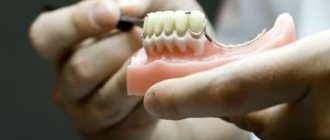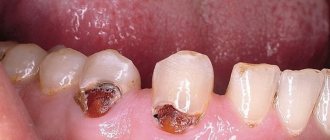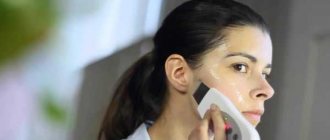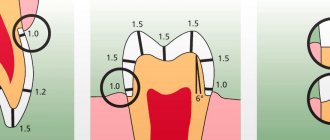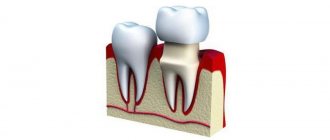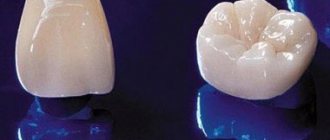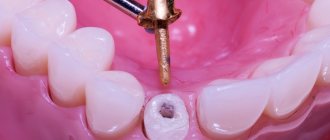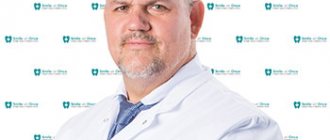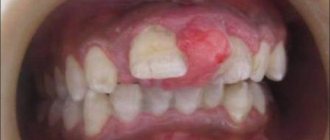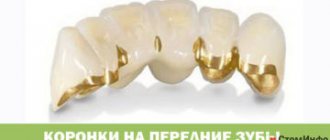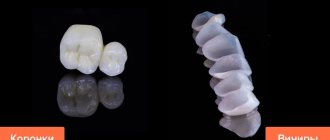The CEREC system refers to modern technology for the fast and high-quality production of orthopedic structures.
CEREC technology was developed at the University of Zurich and has been successfully used in dental practice since 1985. The abbreviation CEREC stands for Chairside Economical Restorations of Esthetic Ceramic - a device for economical and aesthetic ceramic restoration. However, another version of the name is unofficially widespread, which also reflects the essence of the process - Ceramic REConstruction, that is, ceramic reconstruction.
All-ceramic crowns, bridges, veneers, onlays and CEREC inlays are manufactured using computerized equipment, which reduces the risk of errors. For manufacturing, it is not necessary to take impressions and make plaster models, and the entire procedure from preparing the tooth to fixing the finished ceramic restoration on it takes about 2 - 3 hours.
To understand how much CEREC technology has changed dentistry, you need to remember the traditional method: first, the dentist manually takes impressions from the patient’s prepared teeth, then the impressions are sent to the dental laboratory, where a ceramist technician makes a plaster model and uses it to create ceramic restorations. As a result, the patient has to wait 3-4 weeks, during which time a temporary restoration is made and installed. Thus, CEREC dental restoration allows you to make prosthetics fast, as precise and comfortable as possible.
The innovative CEREC system has many advantages over traditional prosthetic technology. The level of precision, aesthetics and reliability of these restorations will never be approached by the traditional technique of pressing and subsequent sintering of the ceramic mass. This takes us to a completely different level of restorations.
Cerec - what is it?
The Cerec system in dentistry is a set of procedures, devices, materials and techniques for fast and effective prosthetics. The abbreviation is translated as aesthetic and economical ceramic prosthetics. The technology was invented in the last century in Switzerland, and now belongs to the American company Dentsply Sirona.
According to the traditional method, dentures are created over several days: first, impressions are taken manually, after which the parameters are transferred to a dental laboratory, where a technician sets the necessary data and creates a design. The Cerec system is based on computer modeling and automation: all stages - from taking impressions and calculations to making the crown - are transferred to digital format. Thanks to this, the patient receives a new crown on the same day of treatment!
In what areas of dentistry is Cerec technology used?
The system is used in various areas of dentistry.
- Restoration:
creating tabs. - Prosthetics:
production of crowns, dental bridges, veneers. - Implantation:
development of surgical templates for implantation, prostheses for installation on an implant with different types of fixation, individual abutments. - Orthodontics:
digital impressions for treatment with aligners, braces and other systems.
What does the Cerec complex include?
This is a whole series of interconnected programs, devices, materials and techniques. It is their complete integration with each other that allows the complex to work quickly and efficiently, and for specialists to create high-precision prostheses in a short time.
Cerec Omnicam Scanner
An oral camera in the form of a 3D scanner is a compact and convenient device that, in a matter of seconds, makes digital impressions of the oral cavity, both jaws and a specific tooth in color. The doctor sees all the parameters and dimensions of the required prosthesis, as well as the whole picture, so the future prosthesis ideally matches the color of the enamel and the anatomical structure of the tooth.
To work with the scanner, no powder, impression material or other additional materials are required, and the procedure takes less than a minute - the patient does not experience inconvenience or discomfort, does not sit with his mouth open for a long time and does not wait, as before, for the plaster for impressions to harden in the mouth.
Simulation software
Data from the scanner instantly enters the virtual planning program. The program is built on the basis of neural networks and artificial intelligence, so it accurately calculates all the parameters of the future prosthesis, visualizes the result and even models the color, tubercles and roughness of a natural tooth. In just a couple of minutes, the doctor and patient can see a model of the future structure and its location in the mouth.
Cerec machine
The grinding and milling machine receives data via the network from the simulation program. From a zirconium dioxide or ceramic block embedded in it, the machine makes a prosthesis that exactly replicates the three-dimensional model, carefully sawing out not only the structure, but also the tubercles, grooves and fissures. This ensures the quality of the product - the more accurate the model, the tighter the prosthesis will fit, and the absence of gaps and air cushions will prevent bacteria and pieces of food from getting under the crown and causing oral diseases.
The machine creates not only prosthetics, but also surgical templates and abutments. The machine turns even the most complex and delicate projects quickly and accurately - on average, the production time of one model takes only 10 minutes.
SpeedFire oven
Compared to huge traditional ovens, the Cerec oven is very small in size and takes about 15 minutes to operate.
The finished model is placed in the apparatus, baking gives it strength and hardness. The structure is then coated with glaze—an additional thin layer of ceramic for smoothness and shine—and baked again.
Materials
Cerec is not only equipment, but also raw materials ideal for the job - ceramic and zirconium blocks, which are installed in the grinding machine for the manufacture of structures. As a rule, zirconium dioxide is used to create bridges and crowns for chewing teeth, prostheses for implants and abutments, and ceramics are used for various types of inlays, veneers and crowns of the frontal teeth.
Cerec veneers and their features
Using the Cerec device, several types of work can be performed to restore your teeth to a beautiful, healthy appearance:
- An alternative to standard fillings are Cerec inlays: after removing caries or other defects, the specialist makes a copy of the cavity and installs it inside the tooth.
- Cerec veneers are placed on the ground surface of the tooth and simulate its appearance.
- Cerek crowns can significantly correct the shape and quality of a tooth and restore its function by 100%.
The technology of prosthetics with Cerek crowns assumes maximum matching of the tooth surface and the structure being installed. Complete tightness and the absence of cavities, which prevents microbes from penetrating inside or changing the position of the crown, guarantees the longevity of use and sustainability of the prosthesis.
Advantages of Cerec over other restoration methods:
- Speed: Cerek crowns can be installed in a short time; the full cycle is just one visit to the dentist (1-2 hours).
- Accuracy through the use of computer technology allows you to achieve maximum results. Since the doctor is only the operator of the system, all important aspects (creating the form, maintaining proportions, processing the material) are performed by the robot. This eliminates the occurrence of errors and defects.
- Durability: more durable materials are used for Cerek inlays: they have a homogeneous structure, and the filling is applied in layers.
- Aesthetics: inlays, unlike fillings, do not stain over time, which is important from an aesthetic point of view.
- Safety due to the guaranteed hypoallergenicity of the materials used and the non-invasiveness of the procedure: when installing Cerek veneers, tooth tissue and nearby tissues are not damaged.
- Comfort: the patient is spared from taking an impression and the associated presence of a large volume of mass in the mouth.
- Painless: the procedure is performed painlessly using local anesthesia.
Advantages of prosthetics using the Cerek system in dentistry
More and more clinics are choosing Cerec technology due to its advantages, which make life easier for the patient and provide a guarantee of the quality of the doctor’s work.
- Time.
The most important advantage of the system. Instead of two or three visits, wearing a plastic temporary denture, or waiting for a new crown with a “hole” in the mouth, the patient receives the same-day restoration in just a couple of hours. - Accuracy.
In the traditional production of dentures, a large percentage of the probability of error is the human factor - even the most qualified specialist can make a mistake in the calculations, and the loss of just one tenth of a millimeter threatens a loose fit of the crown or a violation of the closure of the teeth. Digital modeling and an automatic machine guarantee the accuracy of calculations and the production of the ideal prosthesis, and the virtual planner allows you to see the future result at an early stage. - Comfort.
There is no need to use impression mass, powder, paper, or force the patient to bite the plaster and wait for it to harden with his mouth open. Digital impression taking takes less than a minute. - Long service life.
Due to the accuracy of calculations, jewelry turning and high-quality baking, dentures of the Cerec system ensure a tight fit and structural strength - they will last much longer than traditional products. - Aesthetics.
Computer modeling allows you to choose a color that fully matches the patient’s enamel, as well as work out all the tubercles and grooves - the dentures do not differ from the patient’s natural teeth, they look natural and aesthetically pleasing. - Quality.
As a rule, specialists use materials recommended by the manufacturer for their work. Blocks of zirconium dioxide and Cerec ceramics are ideal for the grinding machine and furnace of the complex; in addition, all materials are certified and quality tested, do not cause allergies and have a wide range of colors for choosing the optimal shade of the future prosthesis.
Cerek technology in dentistry is an innovative, reliable and high-quality prosthetic system. However, the cost of equipment for the entire complex is quite high, and in order to work with the system, the doctor must undergo training. Therefore, the cost of the procedure using this technology is also slightly higher than traditional prosthetics, because the cost item already includes expenses for hardware, materials and training. In addition, not all clinics can afford such expenses.
Therefore, if you have been offered Cerec prosthetics in dentistry, you can trust this clinic, because they spare no expense and time for the comfort of patients, and the excess costs of the procedure are fully covered by the quality, reliability and durability of the products.
Modern methods of planning, manufacturing and fixation of anatomical restorations using CAD-CAM technologies. Working with the CEREC InLab system
A course for dentists who want to improve their skills.
Training includes an in-depth study of techniques for treating dental defects. At the end of the course, cadets will receive a sufficient amount of theoretical knowledge and practical skills to confidently work with patients with this pathology. The course provides for independent reception of thematic patients under the supervision of a mentor. Teacher: Murovich M.Yu.
Course duration 2 months
Includes 8 theoretical and 8 practical lessons.
Cycle of classes: 2 times a week.
Work plan:
Theoretical part:
- Anatomy and physiology of the dental system
- Jaw structure,
- TMJ,
- teeth and dentition,
- muscles h.h. systems,
- occlusion and articulation,
- bite,
- biomechanics n.ch.,
- chewing.
- Features of SOPR
- Motivating patients for treatment
- Patient communication skills
- Anamnesis collection,
- external inspection and photography,
- examination of the oral cavity (condition of the dentition and periodontium, assessment of the degree of tooth mobility,
- CBCT, OPTG, RVG, Itraoral images,
- TMJ zonogram,
- Diagnosis, drawing up an orthopedic treatment plan.
- Working with the patient. Solving assigned tasks.
- Preliminary preparation of the oral cavity before orthopedic treatment.
- Introduction to the basics of digital technology
- Modern methods of planning, manufacturing and fixation of orthopedic dental structures using CAD-CAM technologies.
- Indications for the use of all-ceramic restorations.
- Inlay, Onlay, Overlay tabs. Veneers.
- Half-crowns and full-anatomical crowns.
- Features and techniques of tooth preparation for metal-free structures (crowns, inlays, veneers).
- Preparation of cavities, ledges, boundaries.
- Working with the CEREC InLab system.
- Digital communication opportunities.
- Material aspect and professional interest. Ways for further growth.
- Live modeling.
- Adhesive technology, wax up, mock up.
- Concept of pink aesthetics.
- Introduction to materials for CEREC InLab, feldspar, lithium, hybrid ceramics. Advantages. Dyes. Direct restorations. Definition of color. Choice of material.
- CEREC milling machine.
- Milling cutters, their service life and replacement.
- Dynamometry.
- Cooling system, fluid replacement, maintenance.
- Fixing blocks in a working collet.
- Surface treatment of tabs. Personalization. Polishing.
- Principles of adhesive technology. Glycerin pastes. Preparation of tooth surfaces and restorations. The order of application and photopolymerization of components. Fur. processing, occlusion control.
- Adhesive techniques
- Option and strength-transparency ratio
- Relationships with antagonists.
- “Symbiosis” of an orthopedist, surgeon, orthodontist and therapist. Algorithm and methods of relationships. Collaboration at all stages. Forecasts. Complications. Methods for troubleshooting and solving problems.
- Practicing first aid in emergency situations
Practical part:
| Practicing the theoretical part | + |
| Communication with the patient | + |
| Photos in dentistry | 15 works |
| Reading OPTG and TRG | 10 pictures |
| Manufacturing of metal-free crowns (Emax, Prettau) | 3 pcs |
| Manufacturing of metal-ceramic crowns | 3 pcs |
| Manufacturing of solid crowns | 3 pcs |
Price list of Orthopedics
Promotion: “Bring a friend to the School of Dental Art .
Discount on individual courses in the amount of 3000 rubles for each.
Discount on group training RUR 1,000 for each.
89150664333
